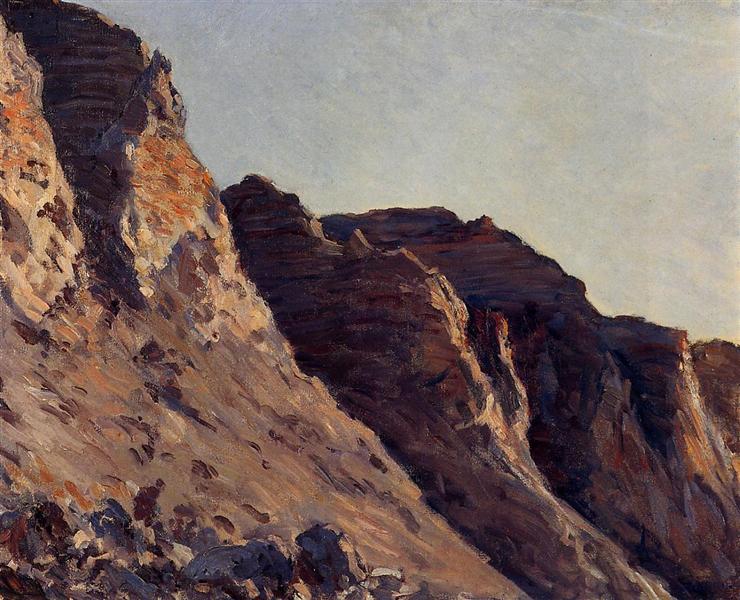Descriere
Gustave Caillebotte's painting "Cliff at Villers-sur-Mer", executed in 1880, is a splendid example of the technical virtuosity and emotional sensitivity that characterize the work of this notable French artist, known for being a leading member of the Impressionist movement. In this work, Caillebotte masterfully captures the serenity of a coastal landscape, offering the viewer not only a visual view, but also an almost tangible experience of the marine atmosphere.
The composition is dominated by a palette of fresh and vibrant colours, where the blues of the sky and the ocean predominate, contrasted by the greens of the vegetation that peeks out from between the rocks. These tones create a harmonious dialogue that invites the observer to immerse themselves in the scene. The diagonal that introduces the cliff to the left guides the viewer's gaze towards the background, creating a sense of depth and perspective. Caillebotte uses the loose brushstroke technique, characteristic of Impressionism, which allows him to convey the changing light and the sea breeze effectively.
In the painting, the cliff is presented as robust and imposing, with its rough texture and superimposed layers reflecting an attention to detail and careful study of nature. The horizon, where the sky meets the sea, brings a serenity that contrasts with the strength of the rocks, establishing a visual balance in the work. However, Caillebotte does not limit himself to a purely landscape representation; the use of subtle light falling on the surfaces and the variety of hues in the water give the painting an almost ethereal quality.
A notable aspect of “Cliff of Villers-sur-Mer” is the absence of human figures, something relatively rare in Caillebotte’s work, which often included scenes of urban life, portraying the modernity of his time. This choice can be interpreted as an invitation to introspection, allowing the viewer to relate to the landscape without distractions, focusing on the connection between nature and the individual. Thus, the work evokes a sense of peace, where the viewer can immerse themselves in the contemplation of the natural environment.
This painting can also be seen as part of Caillebotte's broader exploration of the interaction between man and landscape. Born into a wealthy family, Caillebotte was an innovator who used his fortune to promote Impressionist painting, and this particular work stands out for its almost contemplative quality in contrast to his other, more dynamic and populated works.
Caillebotte's style is distinguished by its focus on light and colour, characteristics that can be compared to those of his contemporaries such as Claude Monet and Pierre-Auguste Renoir, who also explored the beauty and transience of nature. However, Caillebotte differentiates himself by adopting a more structured and often more realistic interpretation of the scene, providing a fascinating counterpoint to the freer, more abstract treatment that his fellow Impressionists brought to their work.
"Cliff at Villers-sur-Mer" is thus a window into Caillebotte's vision of the beauty of nature and a reflection on the stillness and vastness of the landscape. The work stands not only as a testament to his technical skill, but also as an invitation to the viewer to experience the emotional connection that can be established with the environment, a recurring theme in Impressionism, although presented with the singular attention to detail that distinguishes this artist.
KUADROS ©, a famous painting on your wall.
Hand-made oil painting reproductions, with the quality of professional artists and the distinctive seal of KUADROS ©.
Painting reproduction service with satisfaction guarantee. If you are not completely satisfied with the replica of your painting, we will refund 100% of your money.

